Main Menu
Puffy Jacket Review

Heidi Berghammer is a trail runner, world traveler, mountain climber, and all around adventure enthusiast. As a trail runner she has covered thousands of miles in the Colorado Rockies and beyond training for and running races from the half marathon distance to the one hundred mile ultra. Heidi is so stoked about finding adventure on trails that she has made it her career as the owner of Adventure Feet First, a travel company that focuses on getting people outside to explore the world as they travel. Over the past years Heidi has spent months living abroad, volunteering around the world, living out of a van/car/truck, and finding new ways to explore on foot, by bike or with a backpack. She has learned the ins and outs of self propelled exploration the hard way, so she’s here to help us learn from her mistakes and to help us become more informed on how to make your own mistakes…safely.
Share This Article!
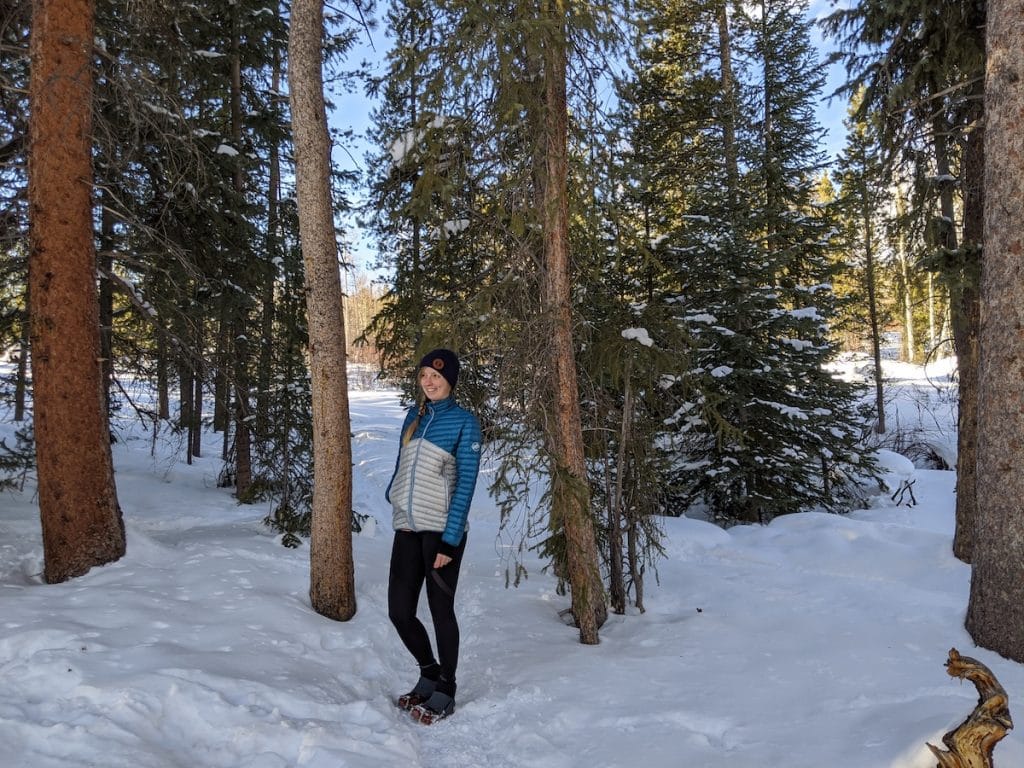

By: Heidi Berghammer
I’m going to be honest, I had no idea what a “puffy jacket” was until I moved to Colorado. Maybe I had a sheltered upbringing…or maybe down jackets weren’t a practical choice for the wet cold of Midwestern winters. Whatever the reason, I have discovered puffy jackets and I tend to have one packed along for adventures nearly year-round. So let’s talk puffy jackets!
First up, what is a puffy jacket and why do you need one?
The term “puffy jacket” has evolved a bit over the years and essentially encompasses any jacket that is, well…puffy. Usually, this means it is filled with duck or goose down, or a synthetic product that acts like duck/goose down. Puffy jackets are designed to be an insulating layer that traps your body heat near your core. This makes them good for layering, especially with a wind or rain layer over top. Just be sure to leave space for the down within the jacket to fluff up and capture your body heat — it is the lofty fluff of down [or its synthetic counterparts] that allow it to keep you warm.
Secondly, how do you tell how warm a puffy jacket is?
One would think this would be an easy process, but there are a lot of factors that go into the actual warmth of a puffy jacket. You’ll often see descriptions such as “filled with 60g of 90/10 down with a 850 fill power.” Let’s break that down [ha, see what I did there?!]. This description essentially tells you the jacket is filled with 60 grams of insulation which is made up of 90% down and 10% feathers. If you take one ounce of the insulation in this jacket it will freely fluff up to cover 850 cubic inches of space, known as 850 fill power. Yup…down warmth ratings have their own language. It gets even more complicated when you add in synthetic downs, which often have company-specific warmth ratings. If you’re interested in getting more of the nitty-gritty about how down ratings work, check out this article: Down Fill Ratings (Everything You Need to Know).
Now, let’s move on to how puffy jackets can be useful while you’re out on the trails.
During the colder months they are great for keeping you warm without trapping so much body heat that you’ll overheat. Their lightweight packability also makes them ideal for stashing in your pack, just in case. I love having a puffy jacket along for nearly every outdoor adventure simply because they are so easy to pack and provide excellent insulation [unless they’re wet…then they become about as functional as wet cotton t-shirts].
The jackets below were trail tested while hiking, snowshoeing and cross country skiing in the Colorado Rockies. When I speak of the “warmth rating” in the reviews I am referring to how warm I felt [+ stayed] on a 30+ minute dog walk in the early hours of the morning when temperatures hovered between 15-25 degrees Fahrenheit. While morning dog walks aren’t an epic adventure they had the most consistent weather for comparison purposes. The rest of the review of each jacket is based upon a longer trail-venture where fit, feel and function tidbits became more pronounced.
We have fairly dry winter weather so puffy jackets are great for 90% of the days I ventured outside. When in doubt [ie: when it got a little too wet outside] I would layer the puffy jacket under a light windbreaker. It is quite easy for wind to wriggle through the real and synthetic feathers of a down jacket! So…after all that talk, let’s get into this!
Patagonia W’s Micro Puff Hoody

Patagonia W’s Micro Puff is an ultralight jacket that feels like a down-filled puffy but is actually filled with PlumaFill, a synthetic down alternative. The PlumaFill fill is protected with a water-resistant and windproof, yet very malleable shell, with DWR treatment. The quilting [or stitches throughout the jacket] are uniquely spaced to allow for maximum loft and a limited amount of “cold zones” where stitching restricts the loft of the insulation.
What We Loved: Overall, this jacket is great from the fit to the function; however, the most notable [non-technical] feature may be the pockets. They are deep enough that you can confidently slip your phone, gloves or keys into the pocket and not constantly check to be sure they aren’t slipping out. It’s a simple thing, but it provides peace of mind!
- What We Would Change: The size of the hood opening could be slightly larger. When wearing a beanie under the hood and fully zipping the jacket, my chin would get smushed inside or weirdly doubled up outside the hood opening.
- Fit, Feel + Function: Sized into a medium and it fits very true to size. The Micro Puff is fitted without restricting so you can feel warm without being a complete marshmallow. The length of the jacket, measured neck seam to hem, is 28 inches and the sleeve length, measured from armpit to wrist, is 22 inches.
- Pockets + Packability: There are four pockets — two zippered pockets at the waist and two inner pouches. The entire jacket packs down into one of the zippered pockets.
- Insulation: Synthetic – PlumaFill polyester.
- Warmth Rating: This jacket could easily be worn as the only external layer in 15-25 degree Fahrenheit temperatures without feeling cold.
Black Diamond First Light Stretch Hoody

The Black Diamond First Light Stretch Hoody jacket brings a mix of PrimaLoft insulation at the core and breathable, stretchy material under the arms. The “stretch” of this jackets name goes beyond the side panels to be an all-encompassing feature. When you slip this jacket on you’ll be able to maintain your full range of motion while staying warm. It is also wind and water-resistant due to the Pertex Quantum Air material that covers the entire jacket. This jacket is designed with climbing in mind but that actually makes it a great option for the diversity of trail adventurers as it allows you to flail your arms, scramble freely and never lose your body heat.
What We Loved: Oooh, this jacket was designed with the long-armed ladies in mind! It is amazing if you’re one of us who always ends up with cold wrists if you need to reach for anything wearing a jacket.
- What We Would Change: The inner pocket is designed to be the stash pocket for the entire jacket…which works, but is not very sleek when in use. Rather than the expected “tube” of packed up jacket you end up with more of a ball. This is harder to squash into your pack when stashing away your extra layer.
- Fit, Feel + Function: Sized into a medium and it is true to size. The hood is designed to fit a climbing helmet, which means there is plenty of room for a beanie and/or ponytail when you’re on the trail. The length of the jacket, measured neck seam to hem, is 27 inches and the sleeve length, measured from armpit to wrist, is 24 inches.
- Pockets + Packability: There are two zipper pockets at the waist and one internal zipper pocket at the chest. With a little effort the jacket can be packed into the internal zipper pocket [it is much stretchier than it looks!].
- Insulation: Synthetic – PrimaLoft Silver Active polyester.
- Warmth Rating: If wearing a long sleeve base layer, this jacket was very warm in 15-25 degrees Fahrenheit temperature — the only reason a long sleeve layer is required is for the breathable panel under the arms, it felt cold against bare skin.
Mammut Broad Peak Light
This Mammut Broad Peak Light jacket is great for a variety of outdoor activities with goose down insulation and wind/water-resistant shell. The jacket is designed with backpacking and climbing in mind, which means it is very low-profile. The two side zippers have discrete zippers that won’t rub or dig in when wearing a pack’s waist strap or climbing harness.
What We Loved: The jacket feels cozy without being boxy, which is a fine line to walk. The Broad Peak Light has a looser fit so you’ll be able to comfortably add baselayers for extra warmth. It is also quite long so your bum stays warm when you’re out and about.
- What We Would Change: The pockets are large, but quite shallow, meaning the zipper goes from top-to-bottom of the pocket so if the zipper is unzipped everything will fall out.
- Fit, Feel + Function: Sized into a medium and it is true to size. The fit is comfortable overall and the collar is just puffy enough to keep your chin warm. The length of the jacket, measured neck seam to hem, is 28 inches and the sleeve length, measured from armpit to wrist, is 21 inches.
- Pockets + Packability: There are two zipper pockets at the waist of the jacket. One of these pockets has a reversible zipper to allow the jacket to be securely packed away.
- Insulation: Goose down — 60g of 90/10 goose down with 850 fill power.
- Warmth Rating: This jacket is more comfortable on the days when temperatures pushed the 25 degree Fahrenheit end of the dog walking control test. I believe this is because of the looser fit which gave your body heat a chance to escape. That said, it was much easier to cool down after our uphill stretch.
The North Face ThermoBall Eco
The North Face’s ThermoBall Eco jacket is filled with, you guessed it, ThermoBall Eco synthetic down which is created from 100% post-consumer recycled polyester. This recycled insulation is protected from the elements with a nylon/polyester shell that has a Durable Water Resistant [DWR] finish. Overall, the jacket feels durable and ready for the everyday abuse of trail-ventures. It has a comfortable, casual fit that is great for the trails and your post-adventure refreshments in town.
What We Loved: The overall fit of the jacket is more relaxed with a bungee along the waist seam that allows you to keep it in place when you’re on the move. It gives you the best of both worlds — range of motion and fitted where needed.
- What We Would Change: Slightly longer sleeves would be a great tweak for those of us with longer arms — it was necessary to have a long sleeve base layer [preferably with thumb holes] to keep my wrists warm when wearing this jacket.
- Fit, Feel + Function: Sized into a medium and it fits well. The overall fit of the ThermoBall Eco is a bit boxy, which allows for more layering. The length of the jacket, measured neck seam to hem, is 26 inches and the sleeve length, measured from armpit to wrist, is 21 inches.
- Pockets + Packability: There are three zippered pockets total — two at the waist and one internal. With some effort the jacket packs into one of the waist pockets with a reversible zipper.
- Insulation: Synthetic down — ThermoBall Eco polyester.
- Warmth Rating: With the right baselayer [ie: long sleeves and thumb holes] this jacket was an appropriate choice for the 15-25 degrees Fahrenheit range of temperature. Aside from the shorter sleeves [albeit, on my very long arms], it was a good choice for the wintery dog walks.
Cotopaxi Fuego Hoodless Down Jacket
The Cotopaxi Fuego Hoodless Down Jacket is filled with RDS [Responsible Down Standard] Certified down. This means that the goose/duck down used as insulation in this jacket follows the Responsible Down Standards, which ensures the down comes from animals that have been treated ethically. The jacket shell is created with a nylon material that does have a Durable Water Resistant [DWR] finish. There are four pockets total — two zippers, two pouches — and a separate stuff bag to compress the jacket when not in use.
What We Loved: The jacket just feels cozy. That’s a very subjective love, but it’s true — there is a lot of fluffy loft with the RDS-Certified down used in this jacket so you feel ready to take on the trails even on colder days.
- What We Would Change: The detached stuff sack is way too easy to lose. It would be great if one of the pockets could be designed with a reversible zipper for packing away the jacket. Moreover, the jacket technically fits into one of the zippered waist pockets just fine, but the zipper isn’t reversible so you’re wiggling your fingers around to make it work.
- Fit, Feel + Function: Sized into a medium and it is true to size. When out on the trail the jacket is comfortable to wear and doesn’t feel tight or restricting. The length of the jacket, measured neck seam to hem, is 26 inches and the sleeve length, measured from armpit to wrist, is 22 inches.
- Pockets + Packability: There are two zipper pockets at the waist and two internal pouches. The jacket can be packed into a separate stuff sack, which is included but not attached to the jacket.
- Insulation: Down — RDS-Certified 800 fill down.
- Warmth Rating: This jacket was a great option for the full spectrum of 15-25 degree Fahrenheit dog walking temperatures. It was easy to get warmed up, but a quick unzip for a little air cooled me down just fine.
Icebreaker MerinoLOFT Hyperia Light
The Icebreaker MerinoLOFT Hyperia Light jacket offers up the versatile warmth of merino wool, which means it will be able to keep you warm even if it gets wet. Although, the shell of the jacket is created with Pertex Quantum Air nylon which is both wind and water-resistant. The core of the jacket if fitted while the sleeves are more relaxed. This unique design allows you to feel comfortable in the jacket while having full range of motion with your arms. This version does not have a hood [although there is a hooded option], but you’ll notice the collar is perfectly capable of keeping your chin warm when it’s fully zipped.
What We Loved: As a whole, the fit of this jacket is very sleek which makes it a good choice for anyone using it on the trails and in town. This versatility, combined with the durability of merino wool [still insulated when wet!], makes the MerinoLOFT Hyperia Light jacket an easy go-to.
- What We Would Change: For anyone with slightly long arms…you’ll wish the sleeves were longer! If you’re not in extremely cold, wind-blown environments you’ll be a-okay, but as soon as conditions get truly wintery you’ll notice that the sleeves are only 20 inches long.
- Fit, Feel + Function: Sized into a medium and it fits well. The overall jacket is a bit more fitted than the other options that depend upon the loft of the down insulation [merino wool doesn’t require this loft]. The length of the jacket, measured neck seam to hem, is 27inches and the sleeve length, measured from armpit to wrist, is 20 inches.
- Pockets + Packability: There are three zippered pockets — two waist pockets and one internal pocket. The internal pocket has a reversible zipper so you can stash the jacket in this pocket.
- Insulation: Merino Wool + Synthetic – 88% Merino Wool, 12% biodegradable thermoplastic polyester.
- Warmth Rating: The MerinoLOFT Hyperia Light jacket doesn’t look overly warm, but once you get outside and start moving you’ll notice it can withstand the range of 15-25 degrees Fahrenheit temperature. Being on the move is essential, especially on the colder end of that spectrum.
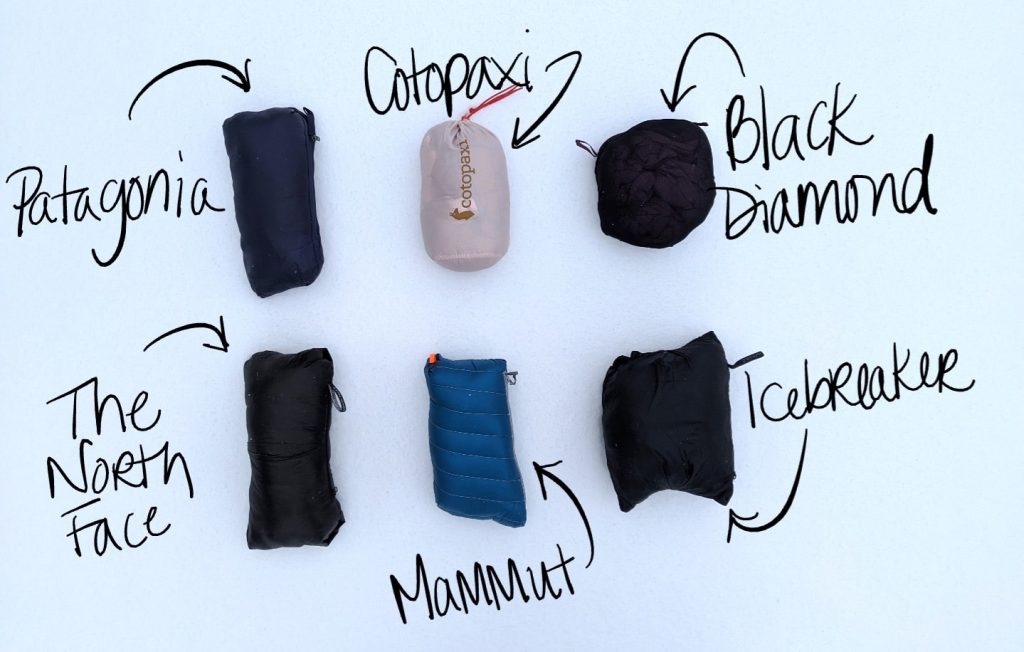
| Jacket | Size | Body Length | Sleeve Length | Type of Insulation |
| Patagonia Micro Puff | Medium | 28 inches | 22 inches | PlumaFill [synthetic] |
| Black Diamond First Light | Medium | 27 inches | 24 inches | PrimaLoft [synthetic] |
| Mammut Broad Peak Light | Medium | 28 inches | 21 inches | Goose Down |
| The North Face ThermoBall Eco | Medium | 26 inches | 21 inches | ThermoBall Eco [synthetic] |
| Cotopaxi Fuego Hoodless | Medium | 26 inches | 22 inches | RDS-Certified Down |
| Icebreaker MerinoLOFT Hyperia | Medium | 27 inches | 20 inches | Merino Wool Blend |
About the Author

Heidi Berghammer is a trail runner, world traveler, mountain climber, and all around adventure enthusiast. As a trail runner she has covered thousands of miles in the Colorado Rockies and beyond training for and running races from the half marathon distance to the one hundred mile ultra. Heidi is so stoked about finding adventure on trails that she has made it her career as the owner of Adventure Feet First, a travel company that focuses on getting people outside to explore the world as they travel. Over the past years Heidi has spent months living abroad, volunteering around the world, living out of a van/car/truck, and finding new ways to explore on foot, by bike or with a backpack. She has learned the ins and outs of self propelled exploration the hard way, so she’s here to help us learn from her mistakes and to help us become more informed on how to make your own mistakes…safely.
Share This Article!


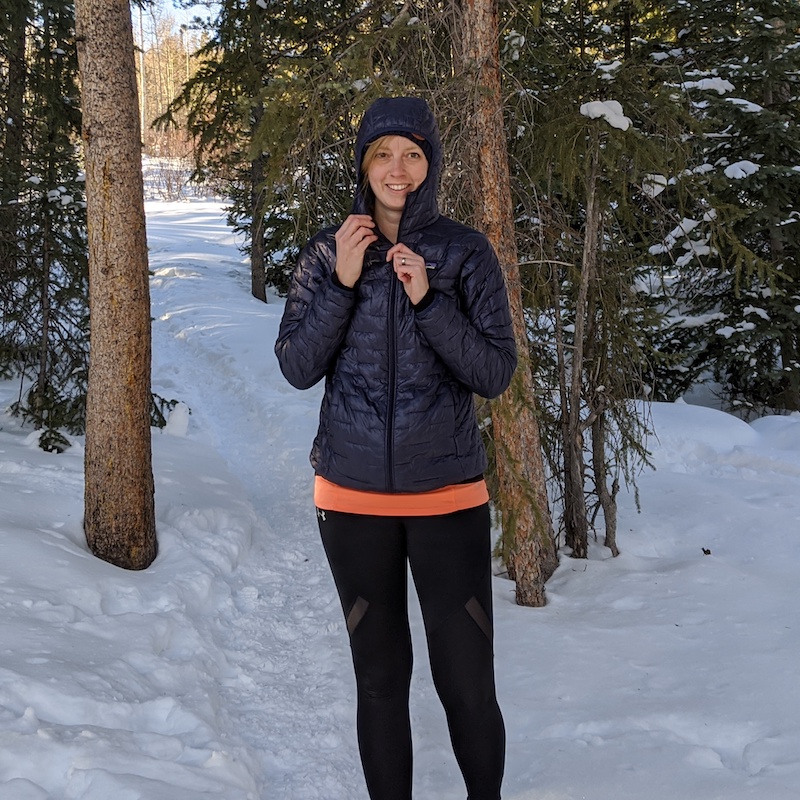
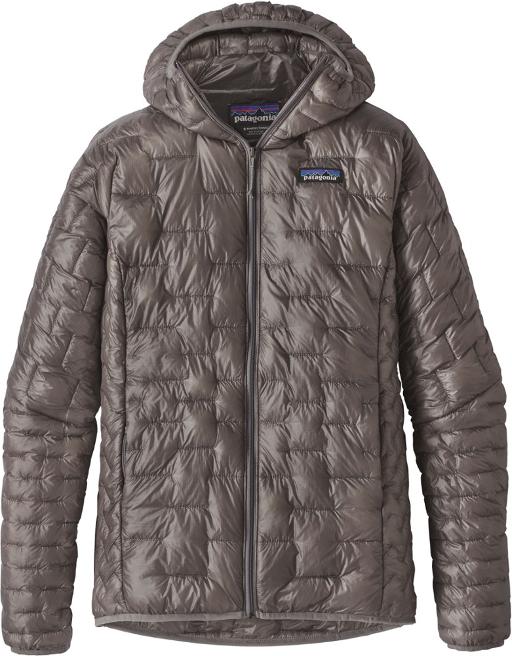
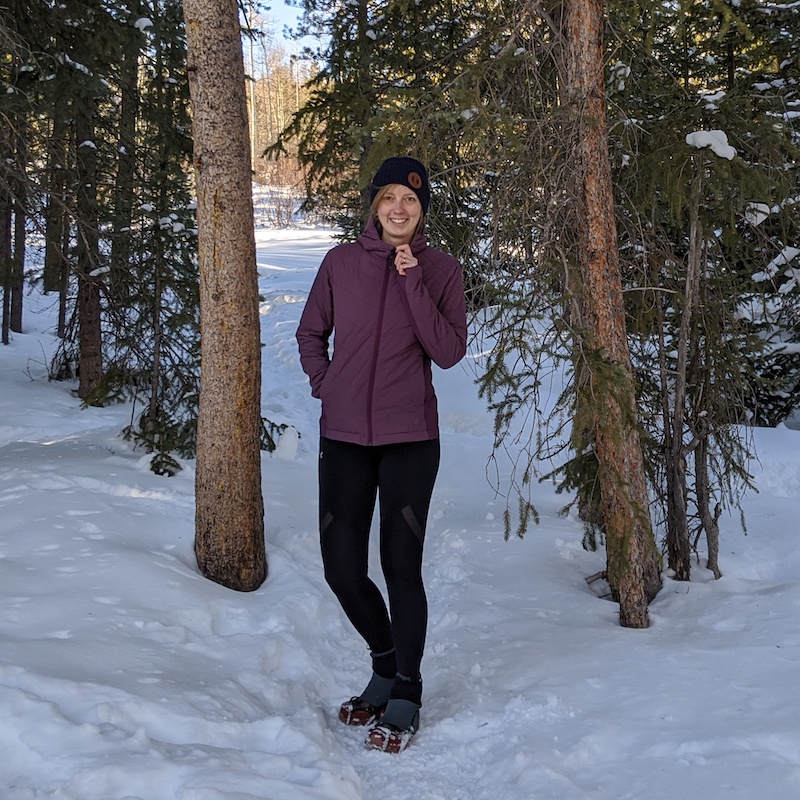
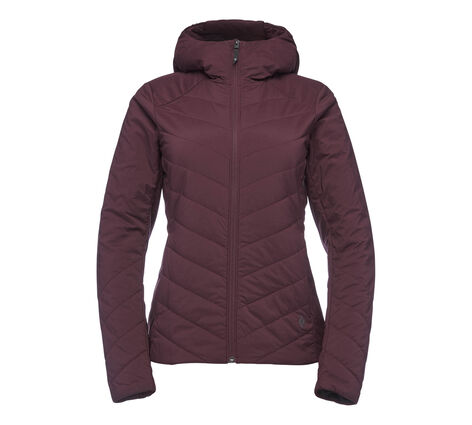
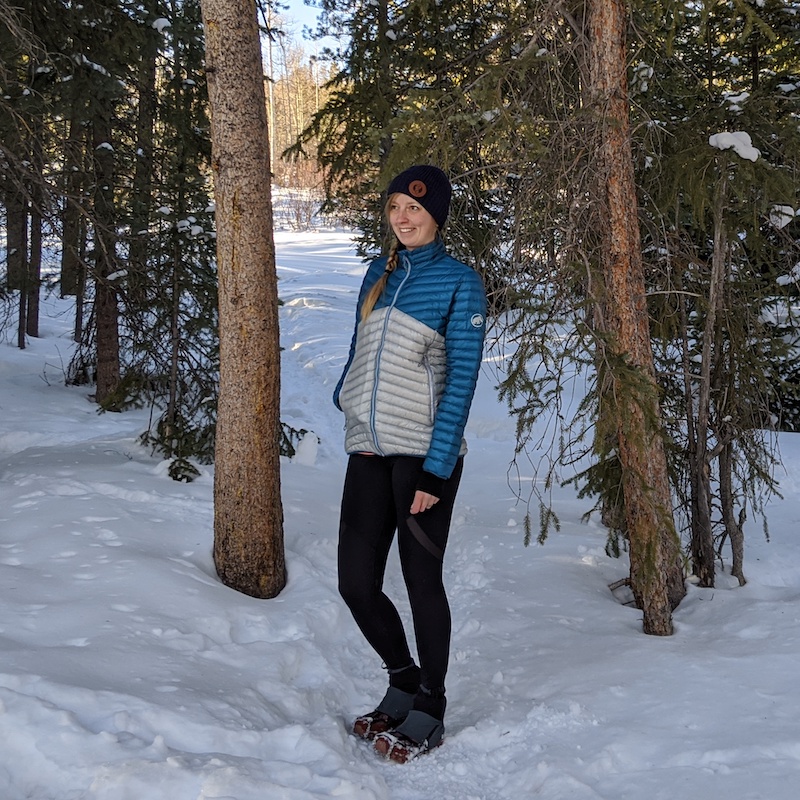
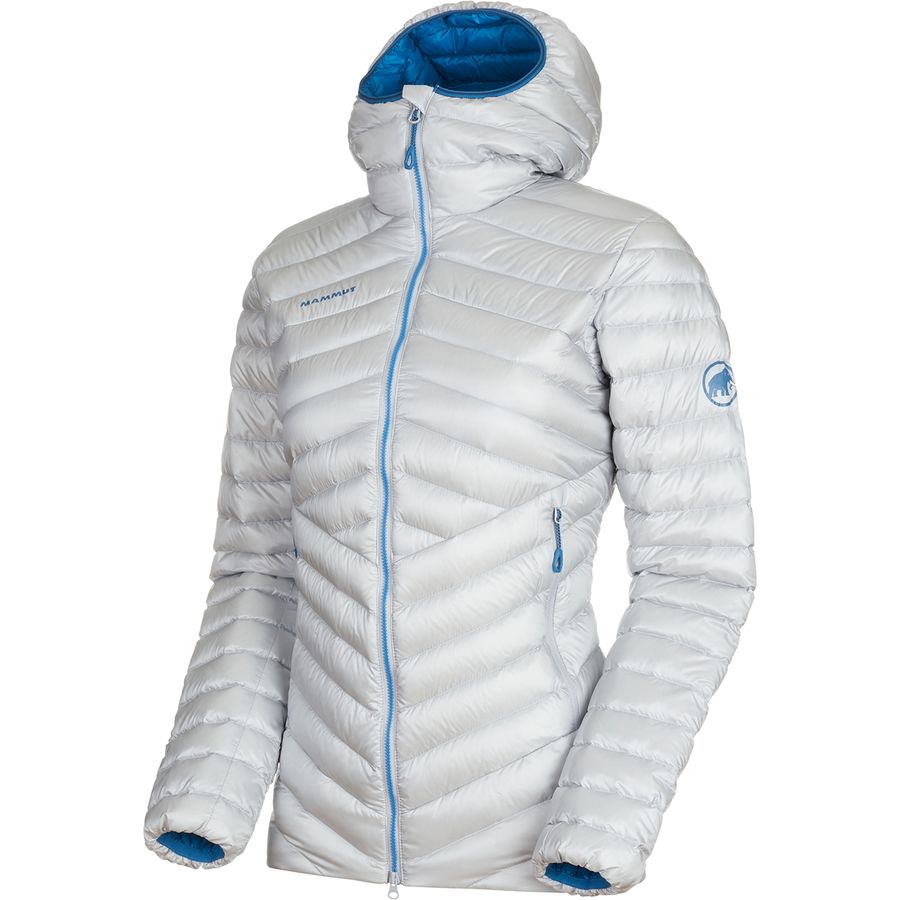
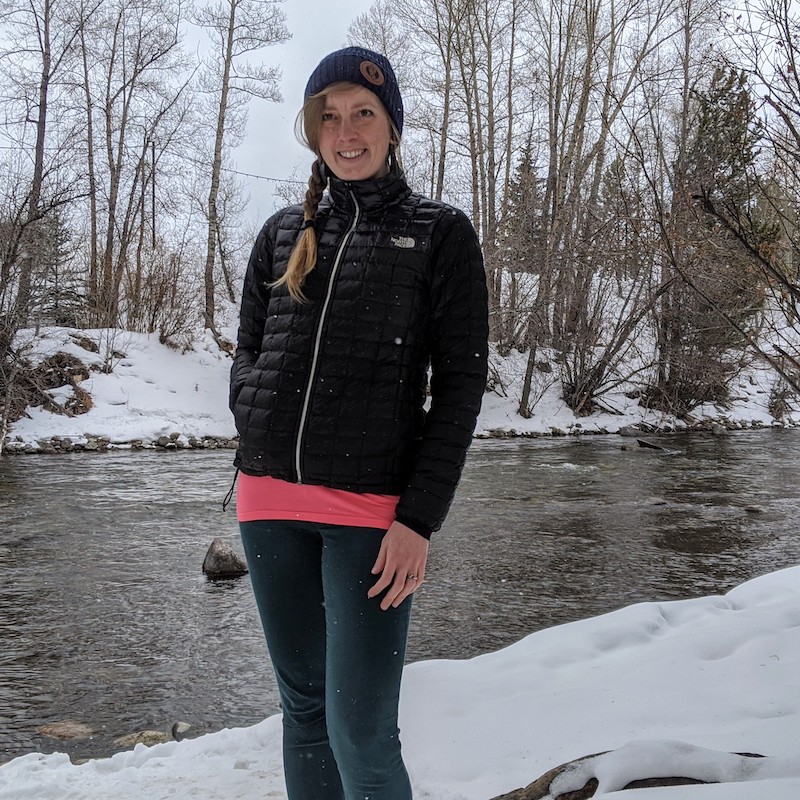
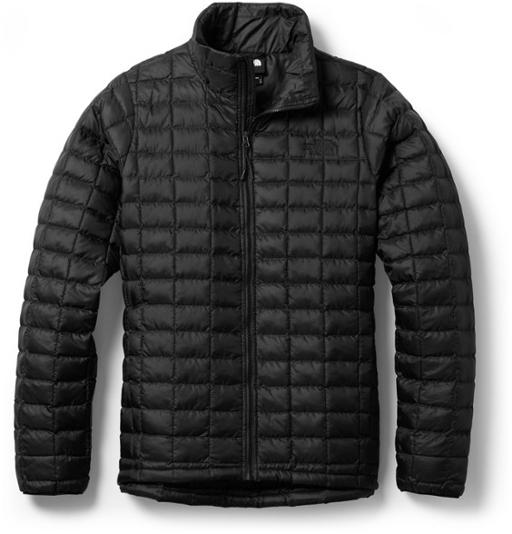
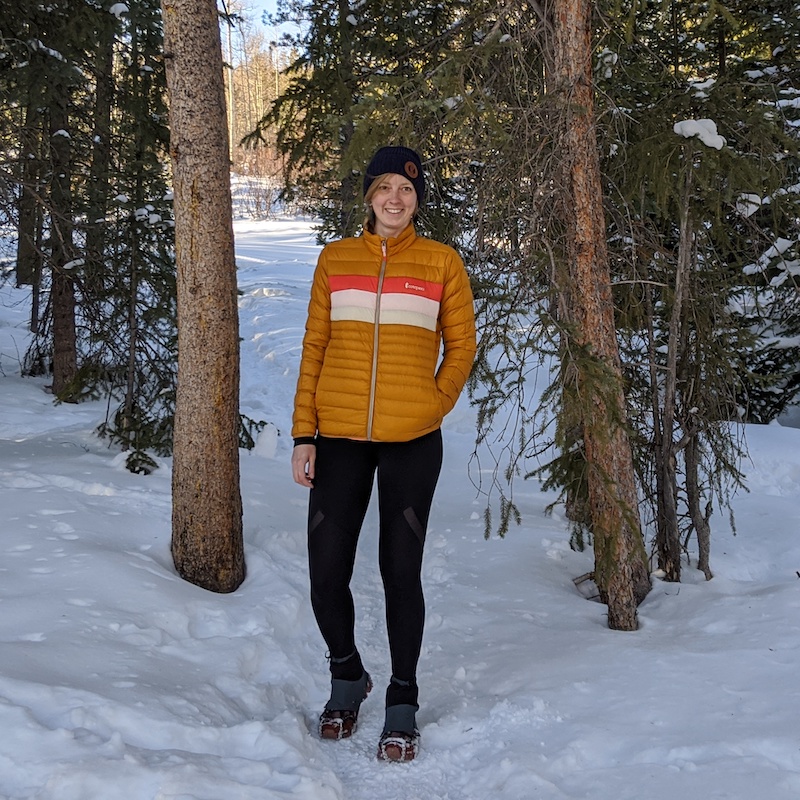
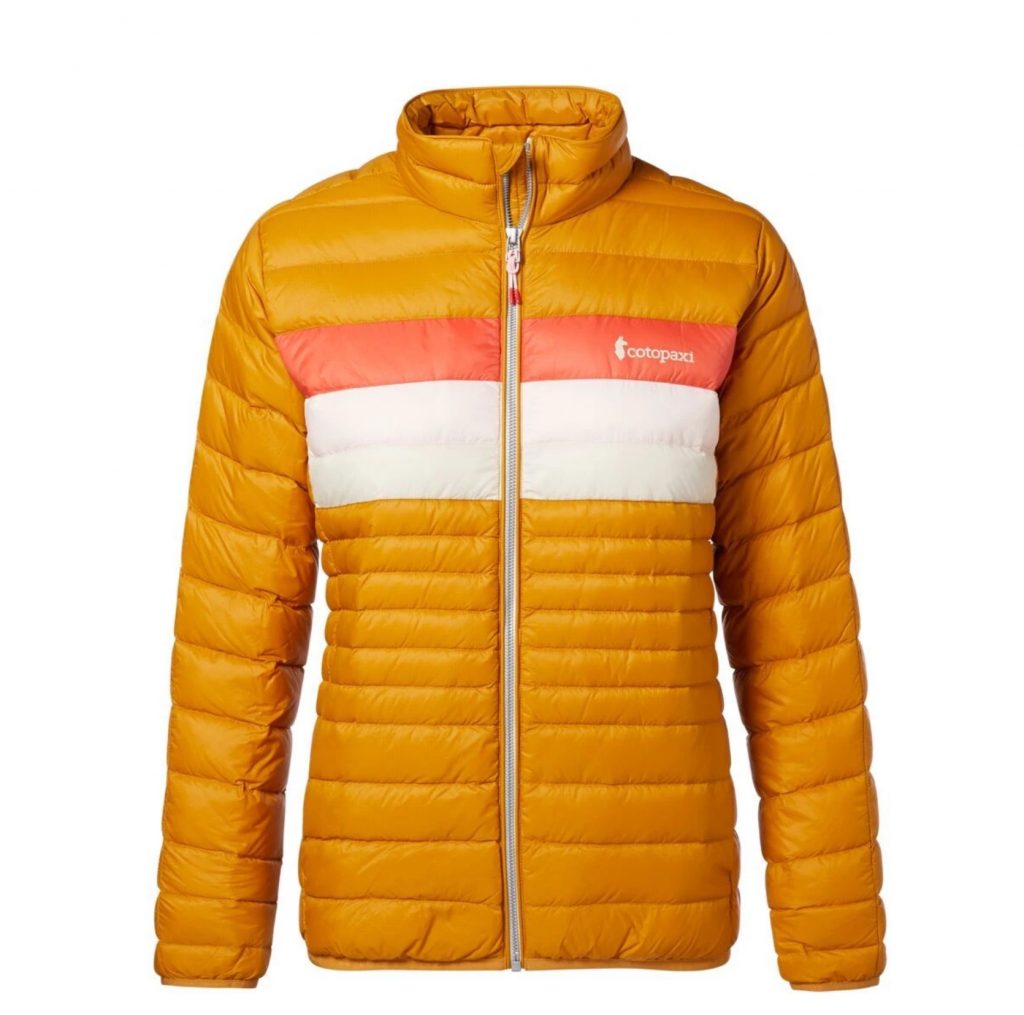
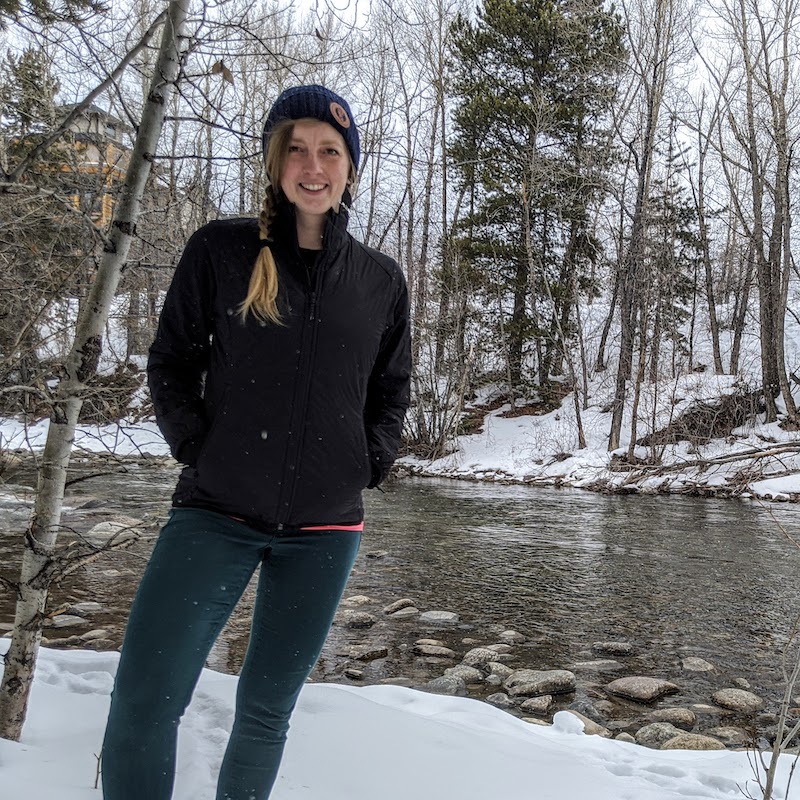
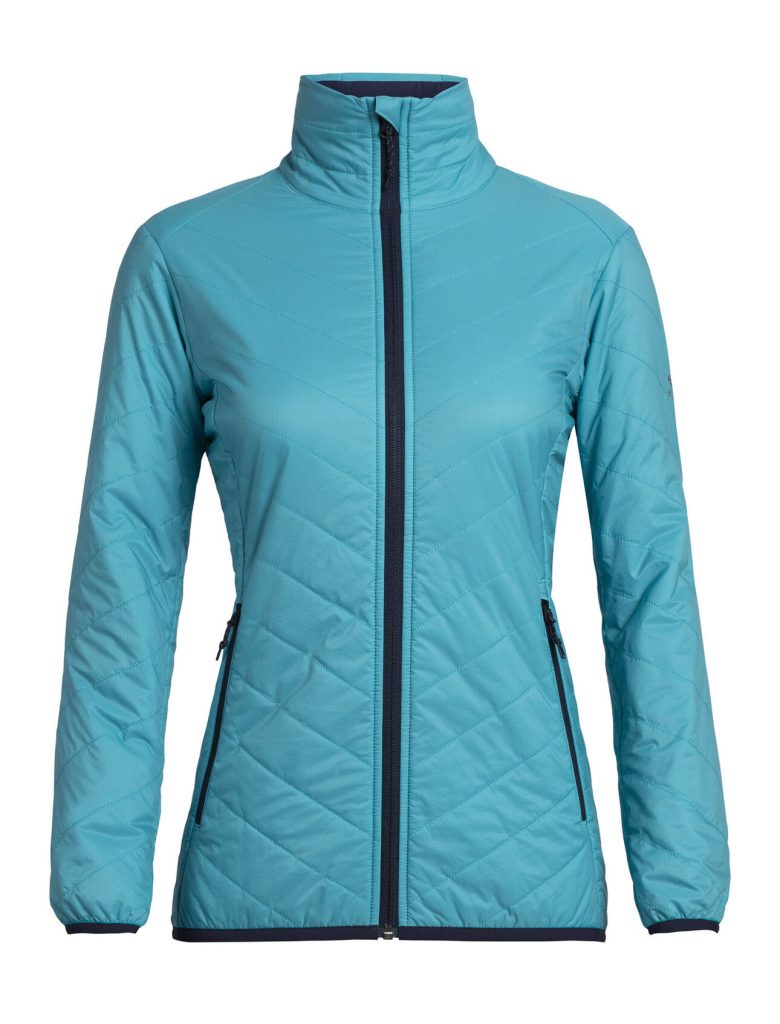
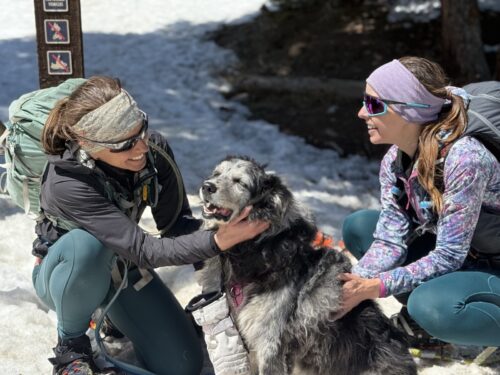
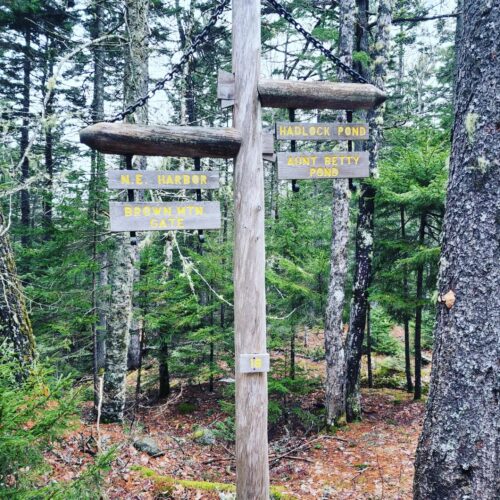









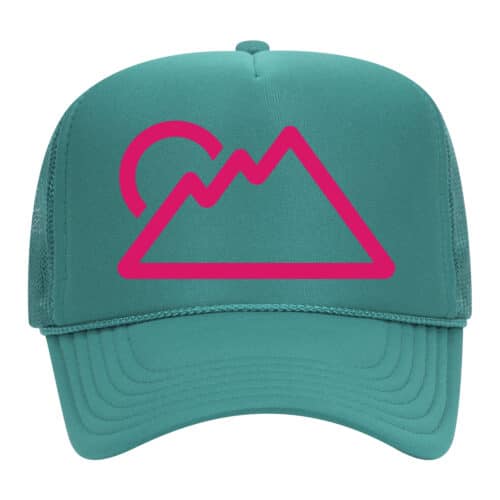
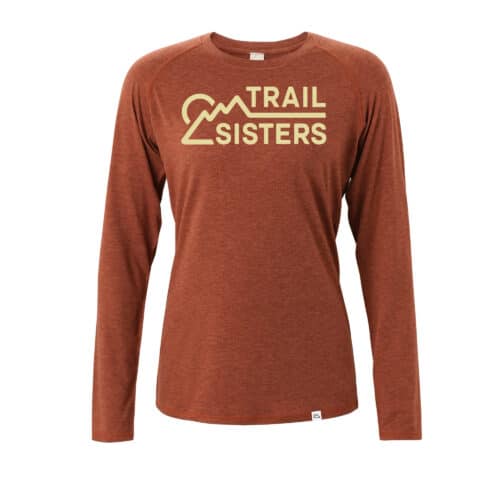
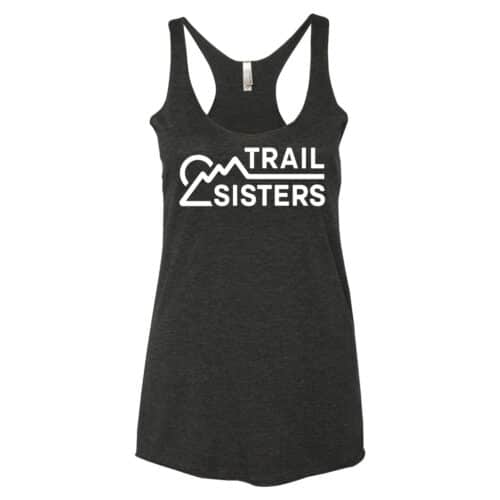
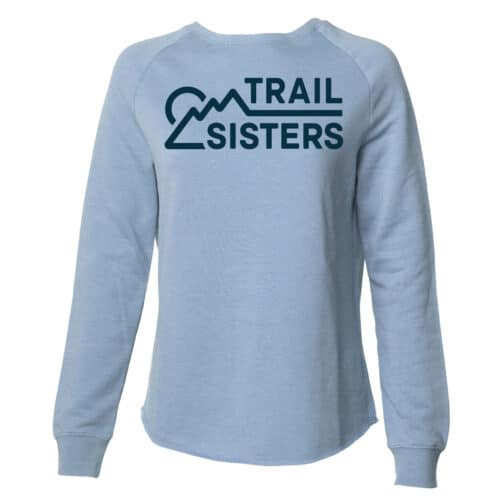
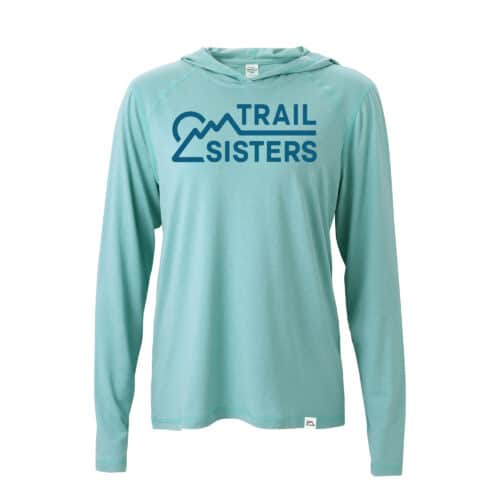
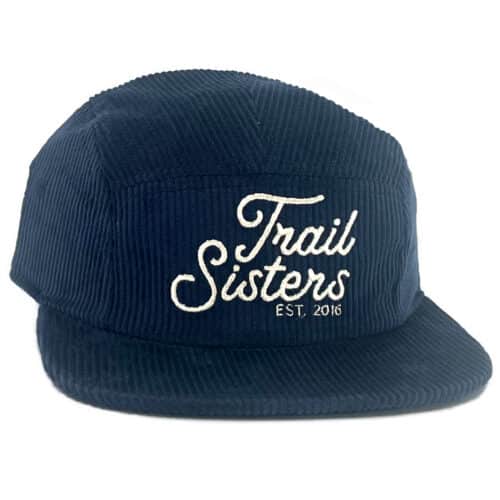

2 Responses
I’ve needed a heavier coat for hiking and trail running for basically two years. There are so many options out there, and I want to have a coat that will last a long time. So, thank you so much for this review!
Maybe I have not figured out the trick, but how on earth do we stay warm and NOT soak our jackets with sweat? What inner layer do we need? I have a Columbia light weight puffy jacket with OmniShield liner and let me tell you, even in the 20s this little thing is warm and I end up soaking it with sweat. My North Face, great for hiking in sub zero Minnesota snow is a bit much for our new home in New Mexico. I have run all winter but still haven’t figured out how to stay comfortable. Not cold and clammy with a soaked jacket. I have pretty much run all fat off so I don’t tolerate cold very well. Does anyone else have this problem?
One great coup I got this winter was a Sim’s snow boarding jacket, retails new around $370, literally never worn, for $12 at a thrift shop. It has a super nice inner layer (cool pink and khaki plaid) that is removable and for the most part good for runs and the outer shell is good for wet, rainy snowy runs.
BTW, I am hoping and praying I can make one of the training camps with Trail Sisters this summer. If you will have a 54 year old ultra runner in the making. 😉